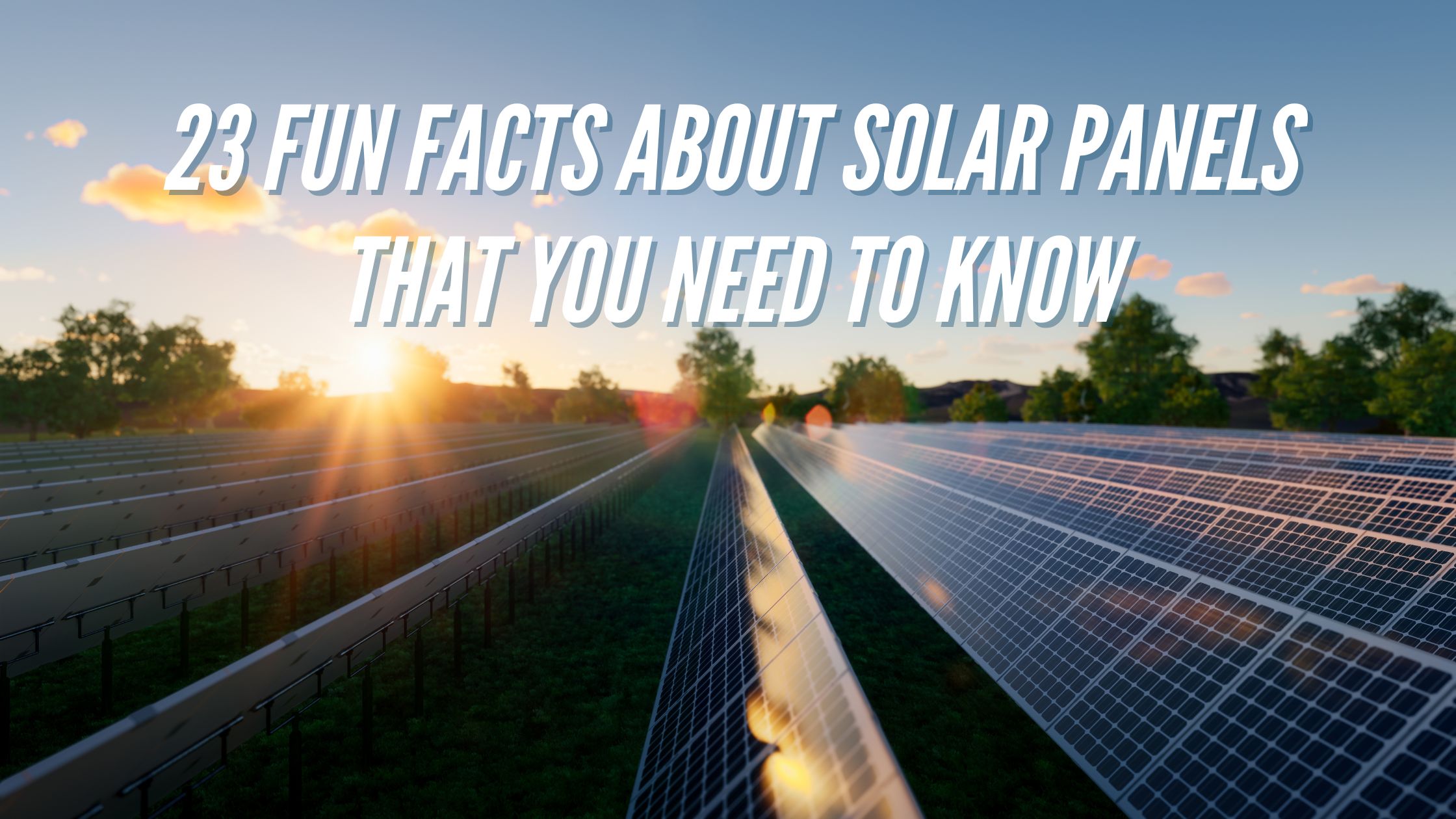Here are 23 fun facts about solar panels that we wanted to share with our readers. Why, you ask? Because we needed a break and wanted to provide you with something fun to read. Let's get to it!
1. A solar panel is a set of photovoltaic modules, an electrically connected assembly of solar cells. It is mounted on a supporting structure and can be used as a system to generate electricity in residential and commercial applications.
2. Each module ranges from 100 to 450 watts, rated by DC output power under STC. The efficiency determines the area of a module given the rated output.
3. Most of the installations contain multiple solar modules as a single module can produce a limited amount of energy.
4. A photovoltaic system includes an array of solar modules or a panel, an inverter, a solar tracer or battery, and interconnecting wiring.
5. There are two types of solar panels: one produces electricity (photovoltaic), and another collects heat (thermal).
6. Solar shingles look like ordinary asphalt roof shingles, and they can be used to avoid the unpleasant look of traditional panels.
7. Micro-inverters perform better than normal panels for they work independently.
8. Solar modules use photons from sunlight to generate electricity through the photovoltaic effect.
9. Cells are generally protected from moisture and mechanical damage.
10. Most of the solar modules are rigid; but based on thin film cells, semi-flexible ones are available.
11. The conducting wires are connected to each other and to the rest of the system, to achieve the desired output voltage.
12. Bypass diodes are incorporated to maximize the output of module sections.
13. Some recent designs include concentrators to enable the usage at a high cost per unit area in a cost-effective way. Modules can also produce electricity from a range of frequencies of light beams, but this usually does not cover the entire range. They can give higher efficiencies when illuminated with monochromatic light.
14. Another design splits the light into different wavelength ranges and directs the beams onto different cells. The efficiency can be improved by studying the semiconductor surface.
15. Use of aluminum over gold or silver is preferred as it can bring down the cost and improve efficiency.
16. Monocrystalline and polycrystalline modules are currently produced for better performance.
17. Third generation prefers advanced thin-film cells. Compared to other solar technologies, they produce relatively high-efficiency conversion for a low cost. They can be rigid or flexible. Flexible films are portable and lighter than rigid films, and resistant to breakage than ordinary crystalline ones.
18. The requirement for commercial and residential purpose is different. Residential needs can be packaged and are simple whereas commercial arena uses complex parabolic reflectors. This is becoming the dominant technology in different fields and aspects of life.
19. Smart solar modules make use of power optimizers and this technology maximizes the harvest of photovoltaic energy. Modules must withstand natural calamities. Manufacturers guarantee electricity production for 10 years at 90% and 25 years at 80% rated power output.
20. Nominal voltage allows users to assure the compatibility of a module with a system. The actual voltage output changes due to lightning and temperature. Some parts of it are recyclable including semiconductor materials, glass, and ferrous or non-ferrous substances.
21. 80% of incoming weight can be recovered from silicon-based modules, and 90% to 95% from non-silicon-based modules are recovered.
22. There has been a systematic reduction in the price of cells. Pricing information can be of three categories: small quantity, mid-range, and large quantity buyers.
23. Rooftop installations supply power directly to an electricity user.
About the Author: Shashank Kirloskar is a professional business analyst. Apart from his profession, he is a freelance writer for Lancosolar.com. He loves writing and sharing articles related to solar energy and companies offering solar panels for homes and commercial buildings.



